Flowers That Start With I Planting new flowers in your flower beds is a great way of breathing new life into your backyard.
If you’re new to gardening or are curious to learn more about certain flowers, you’ve come to the right place.
In this article, I will cover a variety of flowers that start with I. So, next time you’re curious to plant some new flowers in your flowerbed or give your backyard some TLC, you have a better idea of what types of flowers are out there!
Let’s get started, we have a lot of ground to cover.
1. Iris
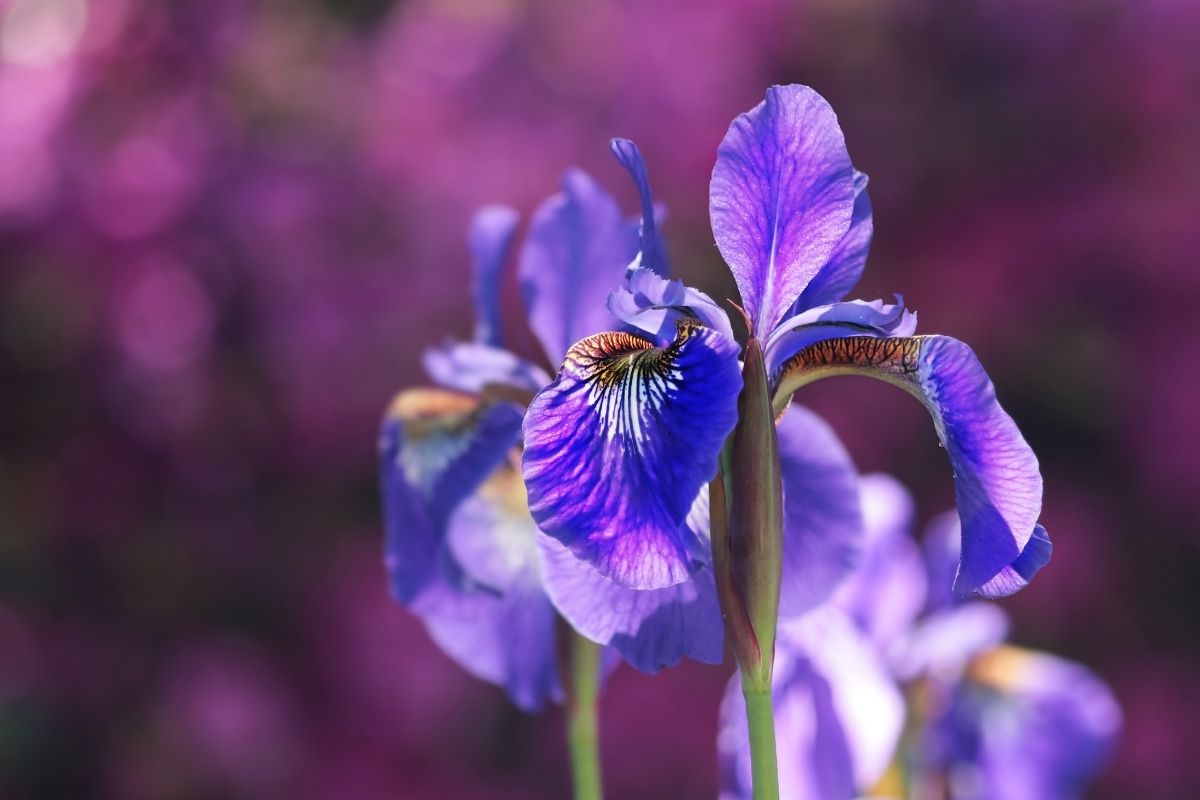
Named after the Greek goddess of the rainbow, irises are a beautiful flower available in a variety of different colors. The most common shades of irises are purple, lavender, white, and yellow.
Irises come in a variety of different sizes, from dwarf varieties to dutch and tall bearded varieties.
The majority of irises will bloom in spring or summer. The best time to plant irises is late summer and early autumn, as this allows them the time to establish roots before the growing season ends.
In terms of exposure, irises need full sunlight for a minimum of half of the day. That being said, some varieties, such as Siberian irises, are able to tolerate partial shade. Some varieties are also known to grow in full shade, but likely won’t flower without the sun.
Irises are known to be toxic to pets when ingested, so you will need to take this into consideration when planting them in your backyard or in the reach of your pets.
2. Ice Plant
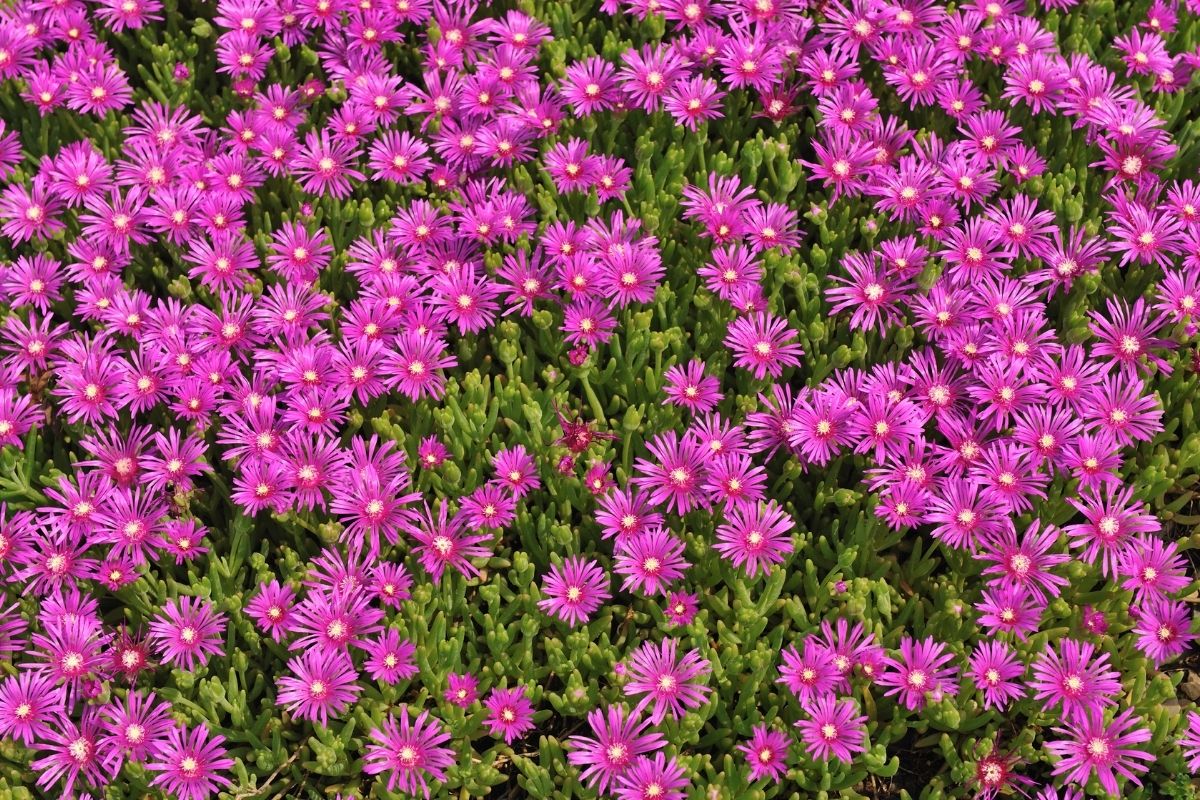
Ice plants are a warm-weather perennial with brightly colored flowers and green foliage. This plant gets its name from the tiny hairs on the plant that reflect light in a way that resembles ice crystals.
Ice plants tend to bloom in spring and continue throughout the growing season. In warmer climates, some types of ice plant flower throughout the entire summer.
The best time to plant ice plants in cooler climates is by mid-summer. On the other hand, ice plants are best planted during the fall in hot climates.
Typically speaking, ice plants prefer full sun, as they need at least six hours of direct sunlight for the best growing conditions. All varieties of ice plants, including the “hardy” types, are sensitive to cold temperatures.
3. Ivy Geranium

As a South African native, ivy geranium plants typically grow the best in moderate temperatures during the summer season.
There are many varieties of ivy geraniums, making them diverse in appearance. For instance, while ‘Crocodile’ ivy geranium plants have green foliage with white veins, ‘Temprano Butterfly’ ivy geranium plants have bright pink flowers.
Ivy geraniums are great for filling window boxes or planters and are also a popular choice for hanging baskets.
Full sun is necessary for ivy geraniums. While partial shade can help the plant to withstand high summer temperatures, four to six hours of full sun is important for ample blooming.
4. Italian Aster
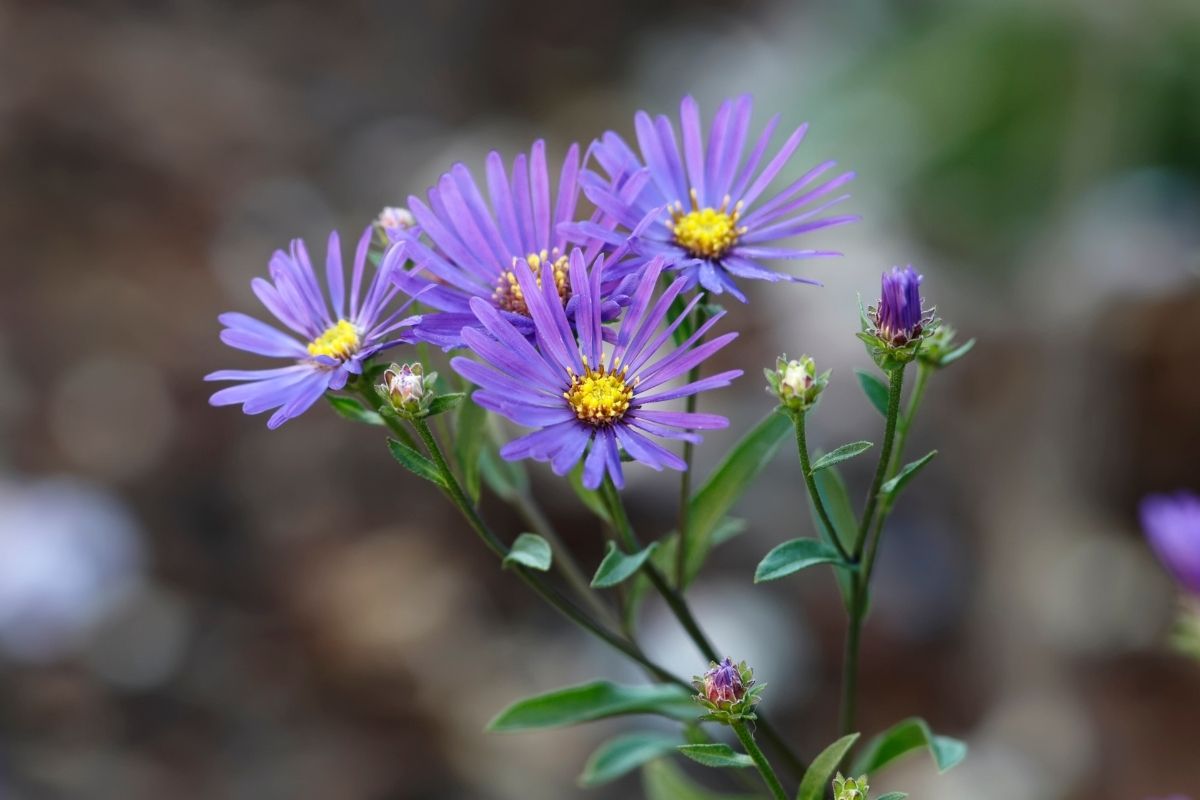
Italian aster, also known as Aster amellus is a herbaceous perennial plant. Italian asters have dark green leaves and flowers with a yellow center and petals of various colors, including blue, lilac, violet, or white. As the name suggests, these flowers are native to Europe.
Native to to Asia, Europe, and North America, Italian asters tend to bloom from July through to October, and prefer full or half sun exposure for optimum growing conditions. Despite this, they still resist cold temperatures and frost very well.
The best time to plant Italian asters is during the spring in well drained soil.
Due to their abundant flowering, Italian asters are often used in pots and flower beds for borders for a beautiful addition to your backyard.
5. Indian Blanket
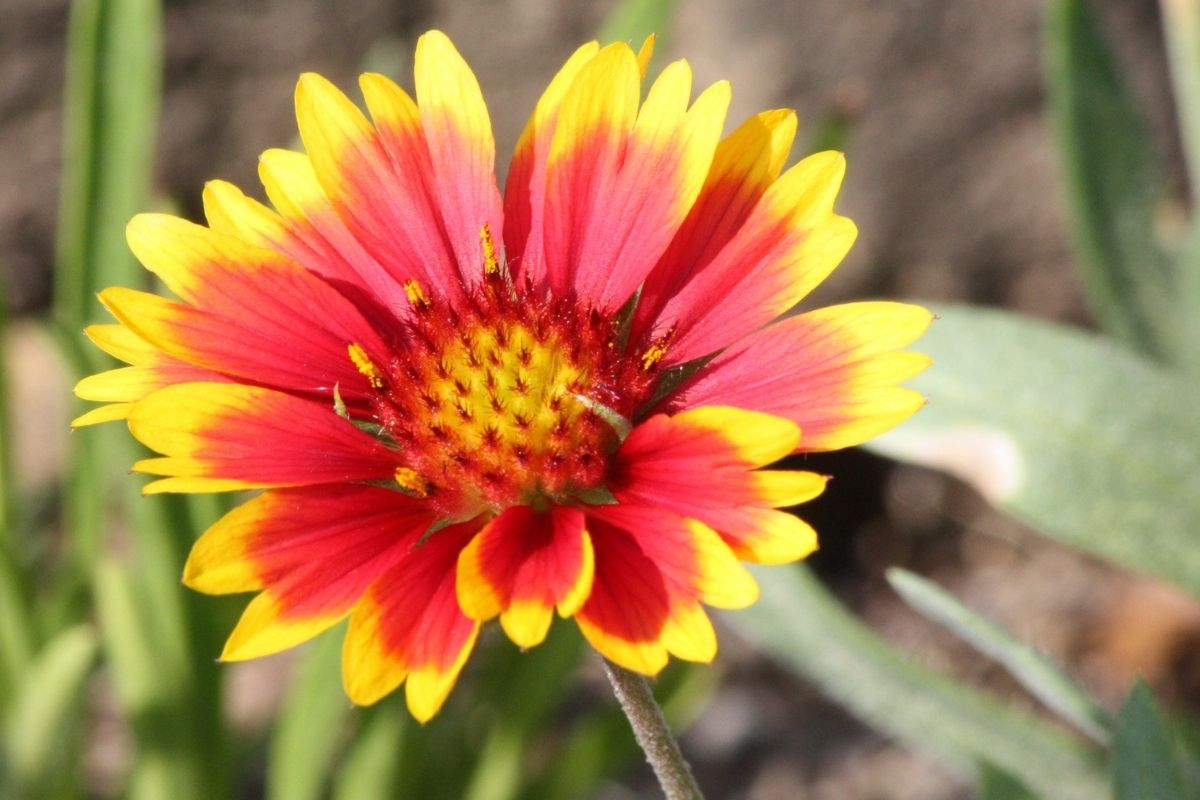
Indian blanket flowers are a member of the daisy family that are named after the native Indian blankets, whose color pattern they resemble.
Native to central America and Mexico, these flowers thrive in warm temperatures, and the bright yellow and red colored flowers are perfect for bringing a pop of color to any flower bed.
These flowers bloom best when planted in full sun locations. Indian blanket flowers are hardy to drought and once they have fully established, but the seeds will require regular watering until germination occurs. They are also cold hardy, and can typically survive in colder climates.
Indian blanket flowers bloom practically all year round in some warmer climates, but more typically in summer to early fall.
They are known to attract butterflies, making them a wonderful addition to your garden.
Related: 27 Fascinating Types Of Jasmine Plants(Including Photos)
6. Indian Pink

Indian pink, also known as Spigelia marilandica, is a perennial that is native to the southeast of America. Contrary to its name, Indian pink flowers are actually dark red on the outside and bright yellow on the inside.
Indian pink flowers thrive the best when growing in shade to full shade. Typically speaking, these flowers prefer moist, organically rich soils. That being said, they are also tolerant of wet soils.
Typically speaking, you will see the majority of Indian pink flowers blooming in May or at the beginning of June. That being said, they can continue blossoming in fewer quantities throughout the summer season, as well.
Fall is the best time to plant this perennial, as this will provide the roots with more time to grow during the fall and spring months to better establish plants before the heat and drought can affect the plant during the summer season.
Indian Pink flowers are a favorite of butterflies and hummingbirds, and are great for brightening up darker areas of your yard. Whether you plant them as a border trim or in shadier patches.
That being said, these flowers can survive in sunnier spots as well, making them a super versatile and hardy addition to any flower bed.
7. Iberis
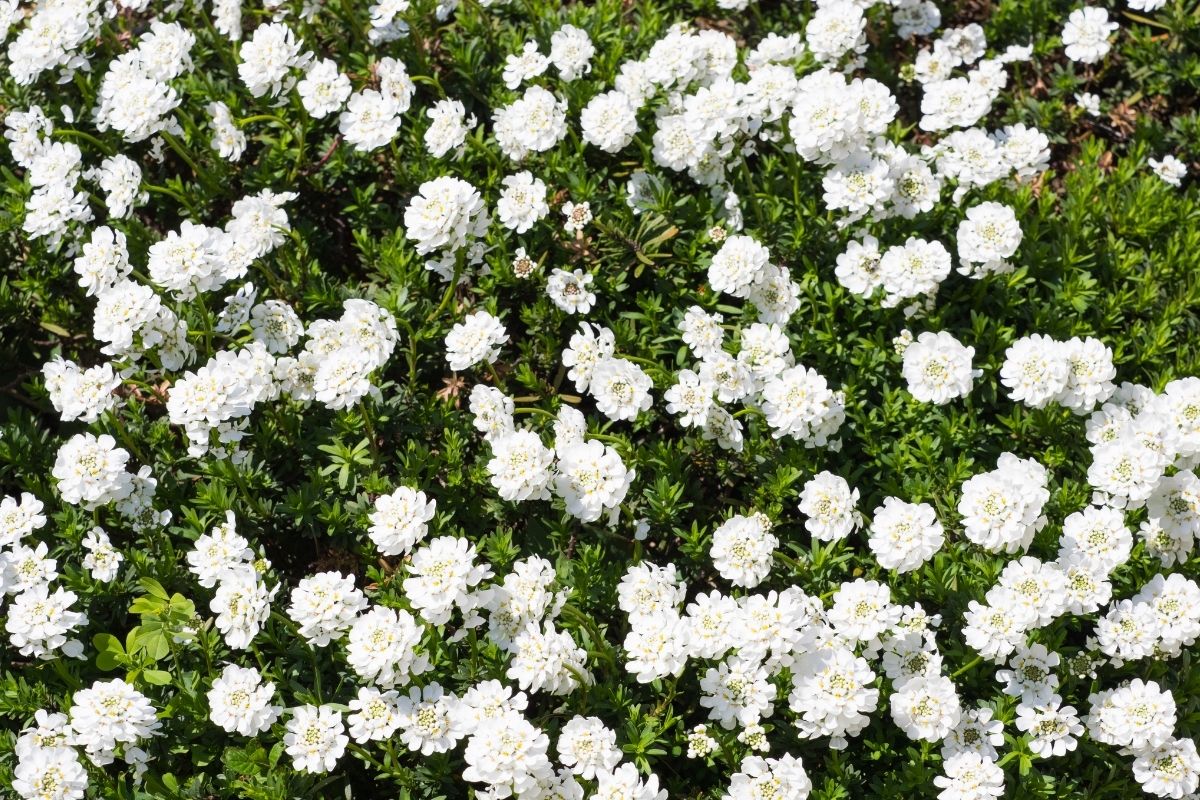
Iberis, also commonly known as candytuft, is a flower that is native to Southern Europe. You might initially think that the name candytuft comes from candy, but you’d be wrong in thinking so. The name “candytuft” actually originates from the word “Candia,” an early name for the island of Crete, which was where these plants were first imported from.
With white or pink blooms, the color of these blossoms look beautiful against dark green foliage. Best planted in early fall, Iberis is a slow grower that is sure to brighten any garden!
Iberis is a late bloomer, producing white blooms with a pink center from spring to early autumn.
Iberis tends to bloom best when planted in the sun. That being said, all varieties of this flower will benefit from having partial shade during the hottest part of the day, especially during the peak of summer.
They are also great for attracting bees and butterflies to your garden, therefore improving pollination for other perennials in your flower bed.
8. Inula Magnifica
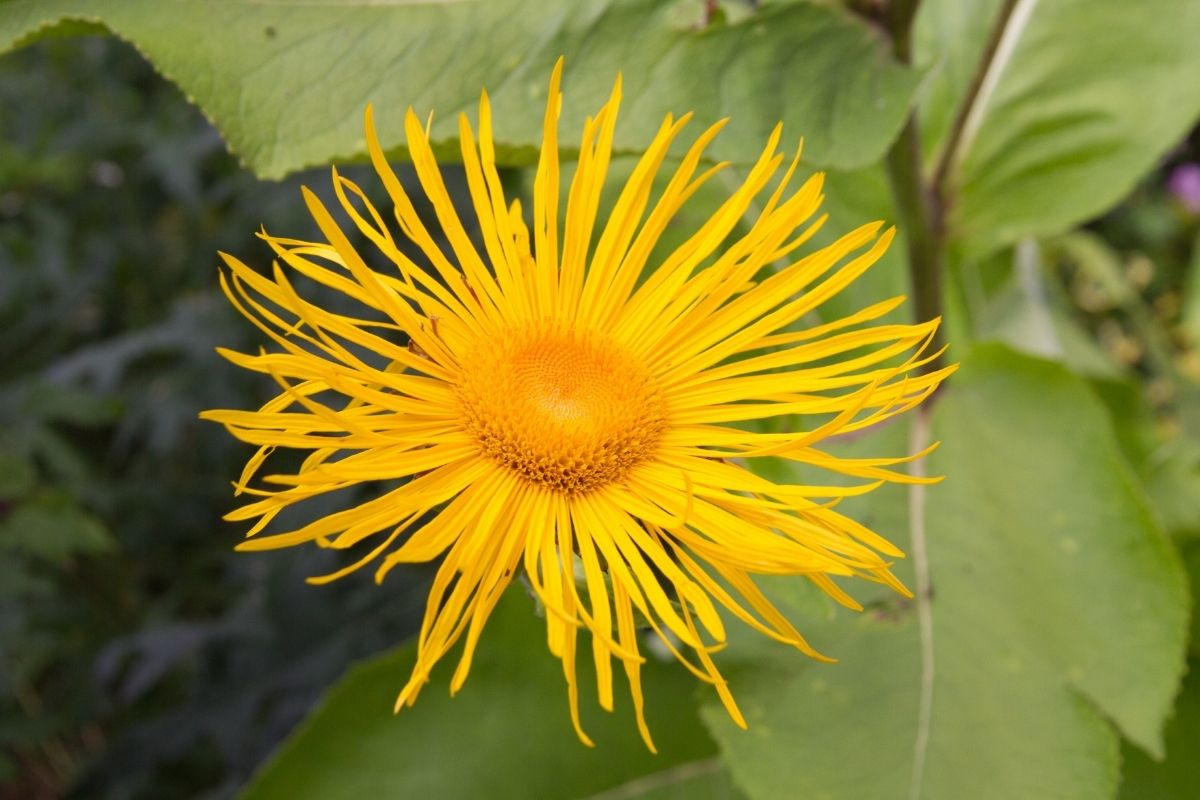
Inula magnifica is a hardy perennial that has tall stems with bright golden-yellow daisy-like flowers.
It is a member of the sunflower (Asteraceae) family, and is native to the eastern Caucasus. It has hairy stems and leaves, and typically blooms in late summer.
Inula magnifica is perfect for a large sunny border in a sheltered location, as it thrives best in full sun.
Insula magnifica should be planted in moist, fertile soil, although it will also tolerate boggy conditions. This is why it works so brilliantly when planted near ponds or streams.
Inula magnifica is known for attracting bees, butterflies, beneficial insects and other pollinators that are good for a variety of other plants in your backyard.
Related: A Whole New World: 10 Different Types Of Jasmine Plant
9. Ipheion Uniflorum
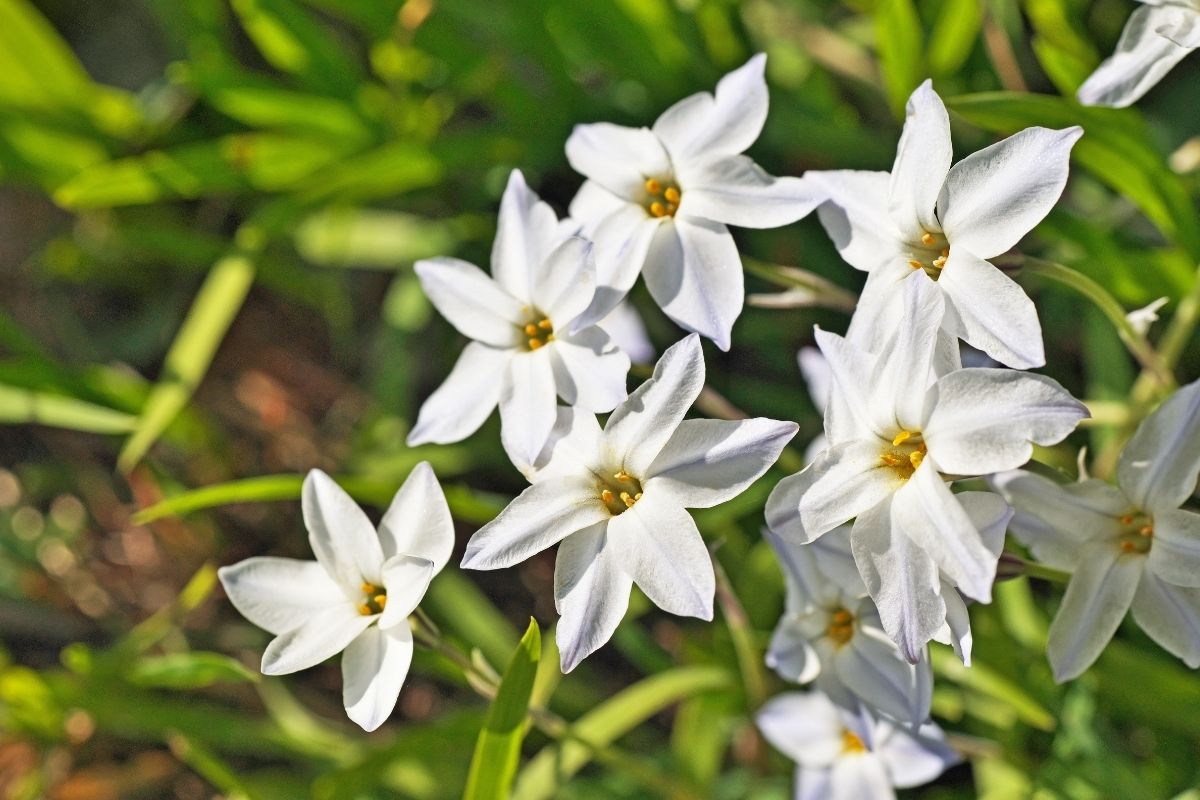
Ipheion uniflorum, also known as spring starflower, is a bulbous perennial with narrow grass-like leaves and star-shaped flowers.
These flowers are native to Argentina and Uruguay, but are widely cultivated in France, Great Britain, Australia, New Zealand, and the United States of America.
They thrive in full sun, and require to be planted in the fall in fertile, well-drained soil. In colder climates, these flowers may require winter mulch in order to thrive.
These flowers come in a variety of different colors. For instance, ‘Wisley Blue’ is a clear lilac blue whereas ‘Froyle Mill’ is a deeper violet blue.
The majority of bulbous plants aren’t invasive, though anything in the onion family should be planted with careful consideration.
These flowers are known for being incredibly fragrant, and can bring a touch of freshness to your flowerbed. Their leaves are edible, and when crushed, ipheion uniflorum flowers have an onion-like scent.
In Summary
So, there you have it! Hopefully after reading this article you have a better idea of some of the types of flowers that begin with the letter I and which ones you might like to plant in your backyard.
Always remember to research which flowers will work best in conjunction with the plants that are already in your flower bed, as you need to know which plants work well together and which ones don’t.
Before you plant new flowers in your garden, you will also need to consider what insects and pests that they attract and how this will affect your other plants.
Good luck and happy gardening!
Editor’s Recommendations
27 Amazing African Violet Plants (With Pictures)







